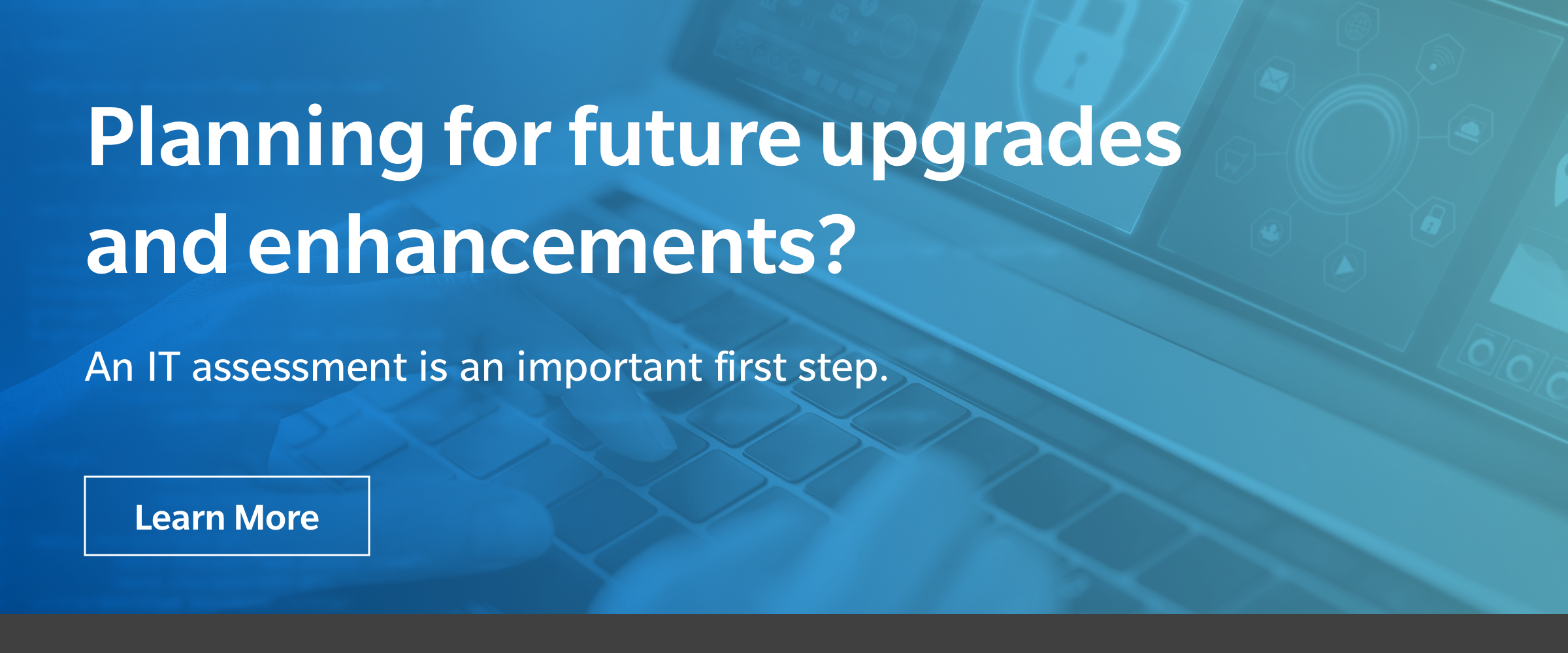If you work in Information Technology, then you are probably familiar with the concept of an Infrastructure Assessment. In IT Services, Infrastructure Assessments are comprehensive reviews of your current technology systems that are outlined in a detailed report. Assessments also generally include recommendations and best practices. A complete Infrastructure Assessment should include a documented review of the following areas:
- Server Environment
- Application Delivery
- Print Environment
- Network
- End User Devices
- Security
- Backup
- Policies and Procedures
Infrastructure Assessments can be a valuable tool for your organization. However, when considering an assessment for your organization, it is important that you have a thorough understanding of what you will be getting. Many IT Service providers offer free Assessments that may appear attractive but often end up being nothing more than a deceptive sales pitch.
If you are considering getting an Infrastructure Assessment, make sure to ask yourself the following questions:
Why do I want an Infrastructure Assessment?
Infrastructure Assessments are often the first step in making long lasting, critical changes to your IT environment, so it is important that you are comfortable and confident that this assessment will lay the foundation you and your company want. Here are a few quick reasons why assessments are an important tool for your IT organization:
- Identify issues requiring immediate attention: Often, an assessment can reveal significant issues, such as a security issue or End of Life equipment that is no longer supported by the vendor.
- Demarcation Point: You need to understand the past before you can comprehend the future. Assessments let you know exactly where you stand and can become a comprehensive plan for future infrastructure upgrades.
- Education for New CIO or IT Executive: Assessments are a particularly valuable tool for IT leaders that are new to an organization. They provided a documented view of the current environment and can identify issues that the new CIO may not be aware of.
- Follow up to a significant Outage: If you recently experienced an outage or serious downtime, then an Assessment is a great way to kick off the detective process. A proper assessment should identify the reason for the outage, and outline a plan to prevent it from happening again.
- Firefighting is consuming your IT Team: If your day is spent putting out fires, then it may be time to look for a proactive solution to the problem, instead of tackling small issues every time they arise.
Who will be doing the Infrastructure Assessment?
When dealing with an IT services company, don’t be afraid to ask for some credentials. Getting a list of industry certifications that their employees have is a good start. If you are getting a review of your entire environment, find out how many people will be working on your assessment. Multiple IT experts on one assessment implies that you are getting a thorough review by people who are detailed experts in a certain field, as opposed to a general review by one person covering multiple technical components. Also, don’t be afraid to ask to speak directly to the individuals that will be conducting the actual assessment. These people will have access to your critical information systems, so you should be comfortable with the people doing the actual assessment.
Can you see examples of previous Infrastructure Assessments?
This is a must. Assessments vary a lot depending on the IT services provider, and seeing an example is a great way to see exactly what you will be getting. This tactic can also be used to weed out companies that are using the assessment only as a sales tool, since they may not be willing to show you actual examples due to a lack of substance. When looking at examples of assessment, check for the following items:
- How clearly are the findings presented?
- Do they have a dashboard or point form list of critical findings?
- How is the information presented?
- Is it written for an executive audience?
- Are details of the technical analysis included?
- Are there screenshots and tables that show the exact findings from the assessment?
- Note: This is particularly important as it shows transparency and a high level of detail for your assessment.
- Are there screenshots and tables that show the exact findings from the assessment?
Remember, the goal when getting an assessment is to make sure that you are getting something of substance and value, as opposed to a quickly completed template that aims at scaring you into spending money.
What exactly will be reviewed?
Again, this is a must. Make sure that you and the company providing the assessment agree on everything that will be assessed and reviewed. This is a very important exercise, so make sure that all critical areas are reviewed and that the results are documented. Assessments are a great way of getting prepared for future environment changes, correcting issues that may be negatively impacting user experiences, and identifying possible security and business resiliency gaps that could significantly harm your organization. Thorough, is the key word to remember.
What is my primary goal?
While you are getting your entire environment reviewed, you most likely have a primary pain point that you need to get addressed. Is there a particular application that is running slowly? Did you experience a recent security breach? Are you looking to refresh your end-user hardware? Are you considering moving to the cloud?
Whatever the reason, make sure the assessment provider is well aware of your primary motivations. This will make sure that when your assessment is completed, you are receiving something that is valuable and can help you quickly and efficiently address this issue.







